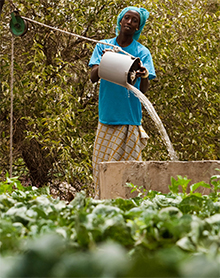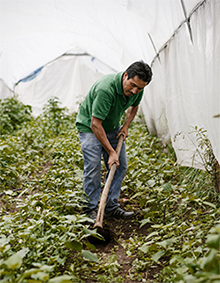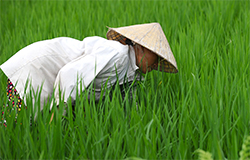Water quality and food safety & COVID-19
Investments to transform smallholders farms and adapt to COVID-19

The issue
Estimates point that family farms operate about 75% of the world's agricultural land. The vast majority of them are small-scale family farms with 95% have land smaller than 5 hectares. However, size is only one among other assets. Wise investment strategies can transform small scale in highly productive and sustainable farming systems. They all face a number of interrelated challenges: they need to adapt to the effects of shocks, like the pandemic, climate change, and make the transition to sustainable farming, and improve food security, nutrition and income. These substantial adjustments require investments at farm level (SDG 13 and SDG 2). The current Covid-19 crisis requires a new wave of investments oriented to support human health, care for the producers’ family well-being including living conditions and access to basic public services such as clean water access and social protection.
To cope with the current crisis, it is of paramount importance to develop IT-supported information systems to target the most efficient type of investment. It is of equal importance to be able to monitor the impacts of these investments on the income, the productivity, the environmental sustainability and on the well-being of smallholders’ families.

Targeted investment in all farm types is needed in order to enable farmers to succeed in the transition to more resilience against shocks and climate (SDG 13), competitive and safe production systems (SDG 8), and to achieve ‘Leaving no one behind’ (SDG 1). Population at risks require investments in housing, access to safe water and sanitation, electricity, to ensure health protection. Investments may cover perennial crops, small-scale processing, small stocks, irrigation, greenhouses, and home gardening for food and nutrition security (SDG 2 and SDG 8).
They need also to consider innovative value chains organizations to reshape domestic markets, to increase reliance on diversified national production systems to be delivered to consumers ensuring trust in safe food provision, using all information channels including social medias to display the information about the measures taken to protect health at all stages of the value chain.
The current information systems cannot provide those up-to-date data sets that would allow targeting investments and monitoring their impacts. These investments should improve simultaneously the asset of the farms, including the human assets (family members with specific attention to women and youth), the living and housing conditions as well as the social protection.
FAO Actions: World Agriculture Watch of Smallholders

World Agriculture Watch (WAW) offers a comprehensive approach and tools to collect data on family farms, which allows to identify needs and target investments. WAW collects data on all types of farms, including secondary data on industrial agriculture with special attention to family farms to design investments for country response plans during COVID-19 and for the long-term. More specifically, WAW makes the following essential data more available to governments in developing response plans, investments, and de-risking operations:
- Definition of family farms, typologies to identify investments strategies and programmes in support of COVID-19 response plans
- Data on smallholder family farms, including sex and age-disaggregated data;
- Monitoring and information systems to document the impacts of the investments.
WAW’s Methodology has three stages, which are depicted below:

WAW’s programme starts with Stage 1 where data on family farms is generated. During COVID-19 the already existing data – as well as data under preparation – can help develop country response plans and assess family farmers’ needs.

Once the data is collected, Stage 2 helps direct investments. In the case of COVID-19, resources are being reallocated – data collected through WAW’s programme can help re-direct necessary funds to the benefit of family farmers. In addition, Stage 2 establishes a monitoring system, which allows to assess investment impacts.

Stage 3 helps establish a monitoring system, which allows to assess investment impacts.
For more info please contact:

